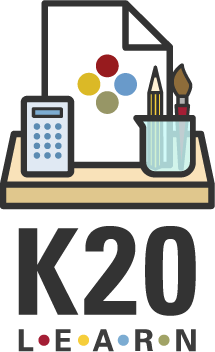Summary
As artificial intelligence tools become more accessible to students and educators, it’s critical that schools build a shared understanding of how to use these tools responsibly and effectively. In this session, educators will explore the foundational elements of AI literacy, practice crafting high-quality prompts, and evaluate when AI tools can meaningfully support instructional planning and student learning. Participants will analyze sample AI interactions, reflect on their role in modeling responsible AI use, and explore strategies for integrating AI literacy into their own classrooms. Through hands-on activities and collaborative discussion, educators will leave with practical strategies and a stronger sense of confidence in using AI to enhance—not replace—sound teaching practice.
Essential Questions
How can educators effectively model the evaluation and responsible use of AI-generated content for students?
Learning Objectives
Evaluate appropriate and effective use of AI for specific instructional tasks.
Examine inputs in AI interactions to identify opportunities for improving outputs.
Explore essential AI literacy skills and plan instructional methods to integrate them into student learning.
Snapshot
Engage
Consider a relevant instructional topic and determine which decisions or tasks are best handled by humans or AI chatbots.
Explore
Collaborate to write and refine AI prompts using educator scenarios, evaluate outputs with the TAG + Rate strategy, and compare results.
Explain
Analyze student AI literacy competencies and use Rose, Bud, and Thorn to reflect on their confidence in teaching them.
Extend
Engage in a Strategy Harvest to identify instructional methods for integrating AI literacy into student learning.
Evaluate
Reflect on takeaways using the Triangle-Square-Circle strategy to capture learning, questions, and practical applications.
Materials List
Presentation Slides (attached)
Decision Division T-Charts (attached)
Say It Right, Get It Right Scenarios (attached)
Say It Right, Get It Right TAG & Rate (attached)
AI Readiness Framework Jigsaw Reading (attached)
Rose, Bud, and Thorn handout
(attached)
Triangle-Square-Circle handout (attached)
Sticky chart paper
Sticky notes (standard size)
Markers
Pens/pencils
Preparation Suggestions
Customize the Presentation Slides for your audience and situation.
Print handouts:
Decision Division T-Charts (each participant will only need 1 page of the packet, so divide total number of participants by 4)
Say It Right, Get It Right Scenarios (1 per participant)
Say It Right, Get It Right TAG & Rate (1 per group)
AI Readiness Framework Jigsaw Reading (1 per participant)
Rose, Bud, and Thorn handout (1 per participant)
Triangle-Square-Circle handout (1 per participant)
Prepare the sticky chart paper with headers (see three domain names in Explain).
Gather materials for the presentation.
Conduct a practice run-through of your presentation.
Test out any technology prior to start of presentation.
Engage
10 Minute(s)
Display slide 2 and divide participants into groups of four. Have each group focus on one topic and decide what parts of the work are best done by humans and what parts are best delegated to AI. Ask participants to record their ideas on the provided Decision Division T-Chart handouts. Assign the following topics, one to each group.
Writing a Poem
Diagnosing a Disease
Grading an Essay
Driving a Car
Have each group share what they decided with the whole room. Emphasize through discussion about each topic how AI assists rather than replaces human judgment. Encourage educators to think critically about how AI can be used in ways to enhance versus replace learning.
Then display slides 3–4 and share the essential question and learning objectives for this session.
Explore
25 Minute(s)
Move to slide 5 and hand out the Say It Right, Get It Right Scenarios (literary analysis, math relevance, ecosystems, history, classroom management). Have each group select the scenario they will write a prompt for, then have each individual in the group write a prompt for that scenario. Transition to slide 6 and have individuals share their prompts out to their whole group. After all have shared, the group determines which one they would like to move forward with—exactly as written with no changes—for the rest of the activity. Pass out the Say It Right, Get It Right TAG & Rate handout and have participants write the prompt they are moving forward with at the top.
Next, display slide 7 and have each group run their chosen prompt through an AI tool (ChatGPT, Gemini, CoPilot, etc.). Ask each group to evaluate the output generated by the AI using the TAG & Rate handout. Move to slide 8 and ask the group to read the output and reflect on its quality by TAGing it:
Tell something that worked well.
Ask what could be improved.
Give a suggestion for revising the prompt.
Have participants write responses for each of these reflection statements on their handout.
Transition to slide 9 and ask groups to evaluate the quality of the output by rating on a scale of 1 to 3 how well the output met each of the following criteria:
Relevance to Scenario
Alignment to Prompt
Clarity of Information
Usefulness to Educator
After this analysis, move to slide 10 and introduce the PARTS framework for writing prompts. Show slide 11 and have each group rewrite their prompt using the PARTS framework on their Say It Right, Get It Right TAG & Rate handout. They should put their new prompt into the same AI tool they used before and compare the output.
Explain
20 Minute(s)
Display slide 12 and distribute the AI Readiness Framework Jigsaw Reading and the Rose, Bud, and Thorn handout to each group.
Assign each group one of the three domains to examine:
Know Your Basics (AI Literacy)
Be a Critical Thinker (AI Literacy)
Know the Human Advantage (AI Readiness)
Participants identify a competency they’re confident in teaching (Rose), excited to explore (Bud), and challenged by (Thorn). Share out to the whole group and identify examples of each (Rose, Bud, and Thorn).
Extend
20 Minute(s)
Transition to slide 13. Have each group select one competency and complete a Strategy Harvest to support the competency in the classroom with students. Ask participants to visit the LEARN website and search for strategies under the “Strategies” tab. They will explore strategies and select one that would work well with their chosen competency.
Each group will record the competency and corresponding strategy on a sticky note, including a brief description of how the group would facilitate this strategy to teach the competency to students.
Groups will place their sticky notes under the correct domain on the labeled chart paper.

Discuss the chart as a whole group.
Evaluate
5 Minute(s)
Display slide 14 and distribute the Triangle-Square-Circle handout. Ask participants to complete it individually.
Triangle-Square-Circle Reflection:
Triangle: Three key takeaways
Square: Something that squares with your prior knowledge
Circle: One question still circling in your mind
Follow-Up Activities
Research Rationale
As artificial intelligence rapidly reshapes the global workforce and everyday life, equipping educators and students with AI literacy has become critical. According to the aiEDU AI Readiness Framework (2024), AI is now an “inescapable part of our world, our economy, and our K–12 education system.” Educators are uniquely positioned to model the thoughtful use of AI tools and integrate AI literacy skills into instruction in ways that promote critical thinking, ethical engagement, and responsible decision-making.
The aiEDU framework organizes competencies around three key domains for both students and educators: Know and Model the Basics, Foster and Model Critical Thinking, and Know the Teacher Advantage. These domains align with global AI literacy frameworks and are supported by a growing body of peer-reviewed research.
For example, Long & Magerko (2020) define AI literacy as a combination of competencies including understanding how AI works, evaluating its outputs, and reflecting on its ethical and social implications. Their work emphasizes that AI literacy is not simply about technical knowledge, but also about preparing learners to navigate an AI-powered world with agency and discernment.
Similarly, Mills et al. (2024) highlight three essential dimensions of AI literacy for K–12 settings: understanding what AI is, evaluating its outputs, and using it responsibly. They call for instructional models that are iterative, student-centered, and grounded in real-world applications—an approach echoed in the interactive and scenario-based strategies featured in this PD session.
Teacher-focused studies such as Lin & Brummelen (2021) stress the importance of engaging educators in co-designing AI-infused curricula and building their own confidence in evaluating AI tools. This reinforces the importance of professional development that not only introduces AI concepts but also models instructional strategies for the classroom.
By providing opportunities for educators to create and refine prompts, evaluate AI-generated outputs using structured tools, and reflect on their readiness to teach AI competencies, this session supports the development of both educator fluency and student-facing instructional planning. It aligns with national recommendations from ISTE, Digital Promise, and UNESCO, all of which advocate for scaffolded, ethical, and interdisciplinary approaches to AI integration in schools.
In sum, this professional development is built on a well-established research foundation that recognizes the need for educators to be critical users, instructional designers, and ethical models in the age of artificial intelligence.
Resources
aiEDU. (2024). AI readiness framework: What district leaders need to know. https://static1.squarespace.com/static/63ebe79f606efb032dd05a5b/t/66f32d390307213ae4d203db/1727212857655/ai_readiness_framework_district_leaders.pdf
K20 Center. (n.d.). Padlet. Tech tools. https://learn.k20center.ou.edu/tech-tool/1077
K20 Center. (n.d.). Rose, bud, and thorn. Strategies. https://learn.k20center.ou.edu/strategy/2224
K20 Center (n.d.). Strategy harvest. Strategies. https://learn.k20center.ou.edu/strategy/135
K20 Center. (n.d.). T-chart. Strategies. https://learn.k20center.ou.edu/strategy/86
K20 Center (n.d.). TAG me. Strategies. https://learn.k20center.ou.edu/strategy/2873
K20 Center. (n.d.). Triangle-square-circle. Strategies. https://learn.k20center.ou.edu/strategy/65
Lin, P., & Brummelen, J. (2021, May 7). Engaging teachers to co-design integrated AI curriculum for K–12 classrooms. CHI '21: Proceedings of the 2021 CHI Conference on Human Factors in Computing Systems. https://doi.org/10.1145/3411764.3445377
Long, D., & Magerko, B. (2020, April 23). What is AI literacy? Competencies and Design Considerations. CHI '20: Proceedings of the 2020 CHI Conference on Human Factors in Computing Systems. https://doi.org/10.1145/3313831.3376727
Mills, K., et al. (2024). AI literacy: A framework to understand, evaluate, and use emerging technologies. Digital Promise. https://doi.org/10.51388/20.500.12265/218


